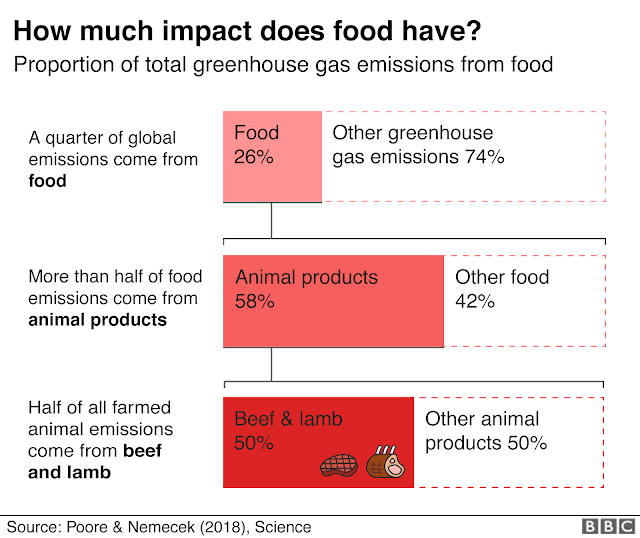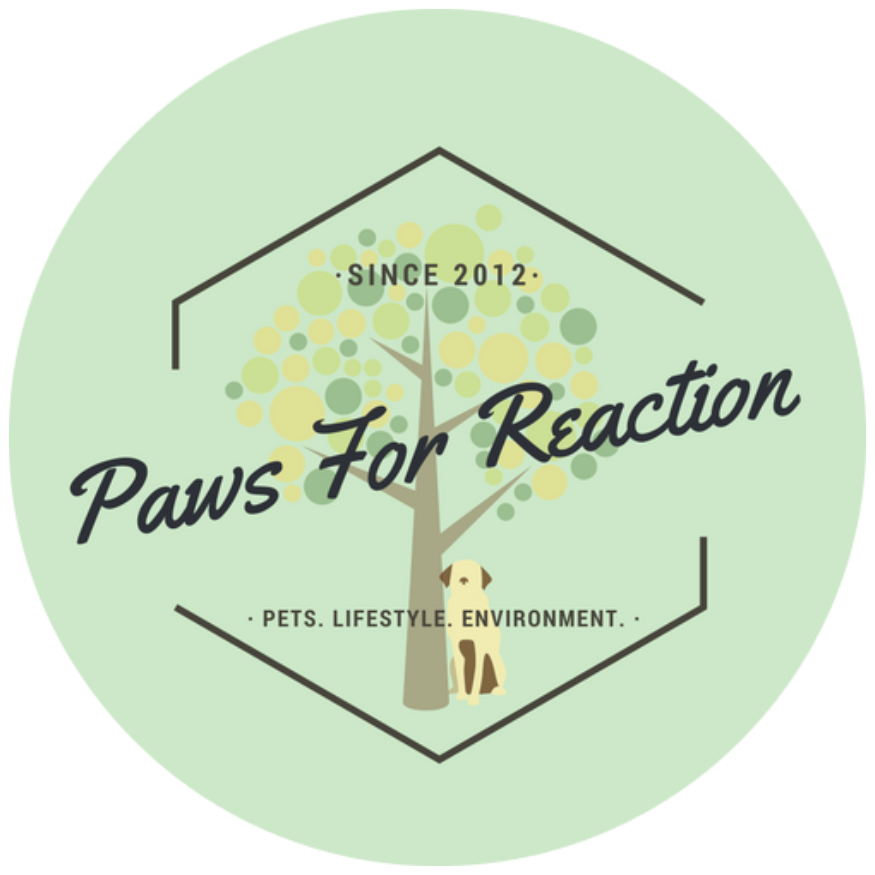
From farm to plate: Climate change is impacted by your carbon foodprint
Food for thought: What's your carbon foodprint and how can you reduce it?
Here's something for you to chew on. One of the easiest ways to fight climate change is with a diet change. We all have a carbon foodprint. What we put in our mouth leaves a mark on our planet. Deforestation to make space for animal agriculture, energy and water consumption, transporting and storing food, the production process, pesticide use, and waste runoff created by farming, and unsustainable packaging are ways our food can harm the environment. Climate change will threaten our food security, causing an increase in weather-related disasters like floods and droughts. To keep food on our plates we need to take climate change off the menu.
The global food system is responsible for a quarter of all greenhouse gas emissions. When we change how we eat, we show the industry how we want to be treated as consumers. Not every diet is suitable for everyone, so some diet changes don't work for everyone, and that's okay. Some things that may influence a diet change include:
- Affordability: Cost and personal finances play a big part in diet decisions. Processed food is more expensive than whole foods, and processed food has a larger carbon foodprint.
- Access: Not everyone lives beside a farmers market like I do. Access to certain foods can limit choices.
- Culture: Many of our food decisions are influenced by how we were fed by our family. Some cultures restrict certain foods and require others.
- Health: Chronic illness and other health concerns can dictate diet decisions.
- BBC foodprint calculator: This calculator allows you to select a specific food or drink product and how often you consume it. It calculates how that food contributes to your yearly greenhouse gas foodprint. It also shows what consuming that food equals compared to driving a car and the amount of water and land use the consumption of that food is equal to. CLICK HERE to try it!
- Eat Low Carbon quiz: If you're more interested in finding out the foodprint of an entire meal, try the Eat Low Carbon food scores. Commonly eaten meals are listed and you can hover over them t find out their grams in CO2 points. You can also take a quiz to test your knowledge about meals and find out if you know which meals have a lower foodprint. CLICK HERE to learn more!
- Food Carbon Emissions Calculator: This tool is especially useful for businesses because it's more comprehensive. It factors in transportation time, the quantity of food, and consumer waste percentage when giving the foodprint of a specific product. CLICK HERE to try it!
- Foodprint.org Quiz: This quiz is more generalized and focuses on everyday diet choices and your food industry knowledge and less on specific products, meals, and carbon emission equations. It's a good starting point for anyone considering a green diet change. CLICK HERE to take the quiz!
- Meat Calculator: Compared to other food, meat has the greatest environmental impact. This calculator shows you how much meat you eat in a year, the eco-impact, and how many antibiotics you will consume on average based on your meat consumption. CLICK HERE to try it!
- Become a conscious consumer. Support local farms and food producers. Purchase antibiotic-free meats and avoid supporting factory farms. Purchase fair-trade items. Shop at farmer's markets.
- Reduce or eliminate beef consumption. Switch to game meats, chicken, or pork.
- Don't eat commercial fish. The commercial fishing industry is destroying the world's oceans.
- Eat less junk food and frozen food. The processing of these foods has a huge carbon footprint. Whole foods are more sustainable- and healthier!
- Reduce food waste. An estimated 30% of the world's food is wasted and ends up in landfills. Chop up vegetables that are over-ripened, portion them and freeze them for later use. Meal prep and freeze meals. Don't over-buy. Eat leftovers.
- Compost plant-based food. This is a great solution to organic food waste. The waste is returned to the earth, where it came from.
- Eat out less. Restaurants have a large carbon footprint and you can't control what goes on your plate. Restaurants also create a lot of food waste.
- Purchase fruits and vegetables that are in season. Purchasing local, in-season produce should cut down the transportation of getting the food from the farm to your plate.
- Avoid single-use plastic. Food consumption creates a huge amount of our plastic litter. Pack your own reusable straw and utensils. Don't use plastic water bottles- bring your own instead. Decline utensils when ordering take-out. Order from restaurants that use paper packaging instead of styrofoam.
- Grow your own vegetables, fruit, and herbs. If possible, grow your own food. It doesn't matter if you have a small garden or a large one, you can still control some of your food from seed to plate. For apartment dwellers, some food and most herbs can grow easily potted inside. You can also see if there is a community garden you can take advantage of.
- Cut back on dairy. I know, I love cheese too! But the dairy industry has a big carbon footprint. Opt for almond milk in your coffee.
Follow my blog and subscribe in the sidebar >>




























4 Comentarios
Don't worry! please see my two posts, how to obtain unlimited renewable energy. with unlimited renewable energy will reduce and stop climate change! and able produce all kinds of food more than we need! https://www.innovationquarter.nl/this-tiny-country-feeds.../
ReplyDeleteI generally check this kind of article and I found your article which is related to my interest. Genuinely, it is good and instructive information about Dog BowlsThanks for sharing an amazing article here.
ReplyDeleteI generally check this kind of article and I found your article which is related to my interest. Genuinely, it is good and instructive information about Food Packaging Machinery.Thanks for sharing an amazing article here.
ReplyDeleteIn addition, poly film emits little to no odor and, as already indicated, is suitable for use with food. The primary distinction is how much longer-lasting polyolefin film is than PVC Stretch Film.
ReplyDelete